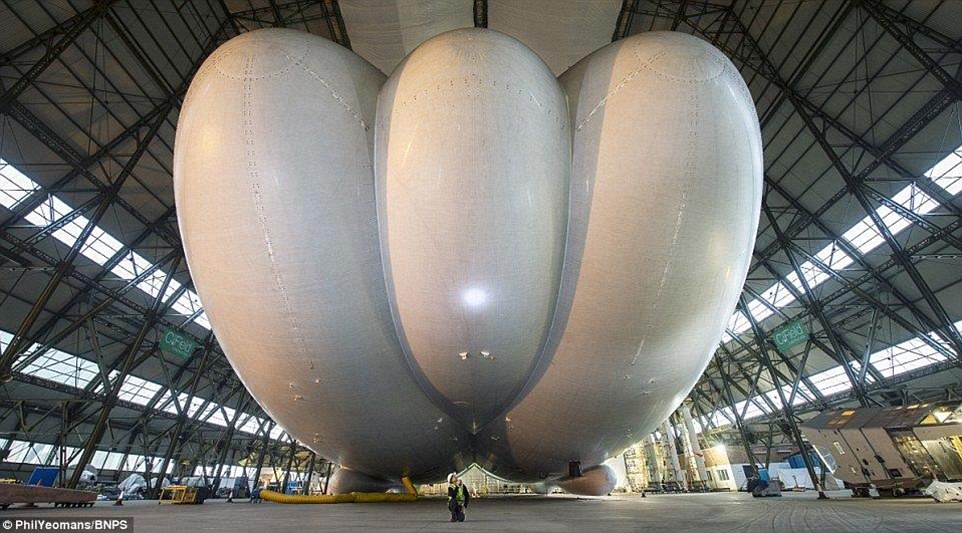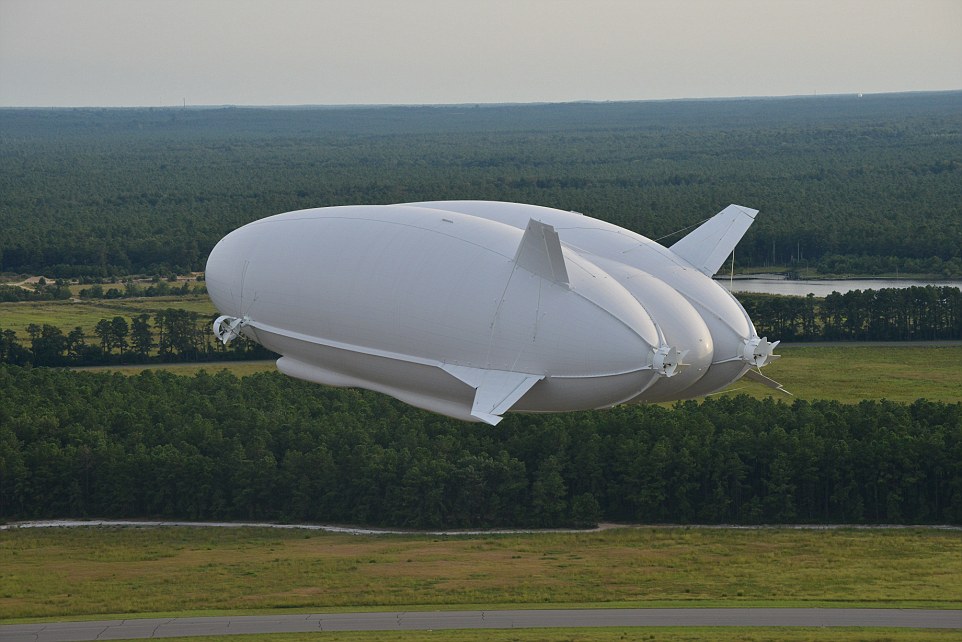CAPSLOCKSTUCK
Spaced Out Lunar Tick
- Joined
- Feb 26, 2013
- Messages
- 8,578 (1.92/day)
- Location
- llaregguB...WALES
| System Name | Party On |
|---|---|
| Processor | Xeon w 3520 |
| Motherboard | DFI Lanparty |
| Cooling | Big tower thing |
| Memory | 6 gb Ballistix Tracer |
| Video Card(s) | HD 7970 |
| Case | a plank of wood |
| Audio Device(s) | seperate amp and 6 big speakers |
| Power Supply | Corsair |
| Mouse | cheap |
| Keyboard | under going restoration |
Three years since work began on the Airlander 10, engineers are putting the final touches on the giant aircraft described as 'part plane, part helicopter.'
The 300ft-long (93 metres) Airlander was originally developed as part of a US Army project but was scrapped by military bosses. It is now being converted to provide business and leisure flights in a hangar in Cardington, Bedfordshire.
The vessel was filled with 1.3million cubic feet of helium - enough to fill 15 Olympic-sized swimming pools -in a test run last October and now the engines and fins are being fitted ahead of next month's flight.

It produces 60 per cent of its lift aerostatically, by being lighter-than-air, and 40 per cent aerodynamically, by being wing-shaped, as well as having the ability to rotate its engines to provide an additional 25 per cent of thrust up or down.
This means the Airlander can hover as well as land on almost any surface, including ice, desert and water.
It will be able to stay in the air for two weeks at a time, cruising at more than 90mph (144km/h), and travel at heights of up to 20,000ft (6,100 metres) with a 10-tonne cargo.

The craft did carry out a test flight in 2012 in New Jersey (pictured) but next month's take-off will be the first under the hybrid aircraft's latest specifications. Some have hailed the Airlander as the future of air travel because, unlike conventional aeroplanes, it emits little pollution and is not noisy enough to disturb people on the ground
The 300ft-long (93 metres) Airlander was originally developed as part of a US Army project but was scrapped by military bosses. It is now being converted to provide business and leisure flights in a hangar in Cardington, Bedfordshire.
The vessel was filled with 1.3million cubic feet of helium - enough to fill 15 Olympic-sized swimming pools -in a test run last October and now the engines and fins are being fitted ahead of next month's flight.

It produces 60 per cent of its lift aerostatically, by being lighter-than-air, and 40 per cent aerodynamically, by being wing-shaped, as well as having the ability to rotate its engines to provide an additional 25 per cent of thrust up or down.
This means the Airlander can hover as well as land on almost any surface, including ice, desert and water.
It will be able to stay in the air for two weeks at a time, cruising at more than 90mph (144km/h), and travel at heights of up to 20,000ft (6,100 metres) with a 10-tonne cargo.

The craft did carry out a test flight in 2012 in New Jersey (pictured) but next month's take-off will be the first under the hybrid aircraft's latest specifications. Some have hailed the Airlander as the future of air travel because, unlike conventional aeroplanes, it emits little pollution and is not noisy enough to disturb people on the ground









